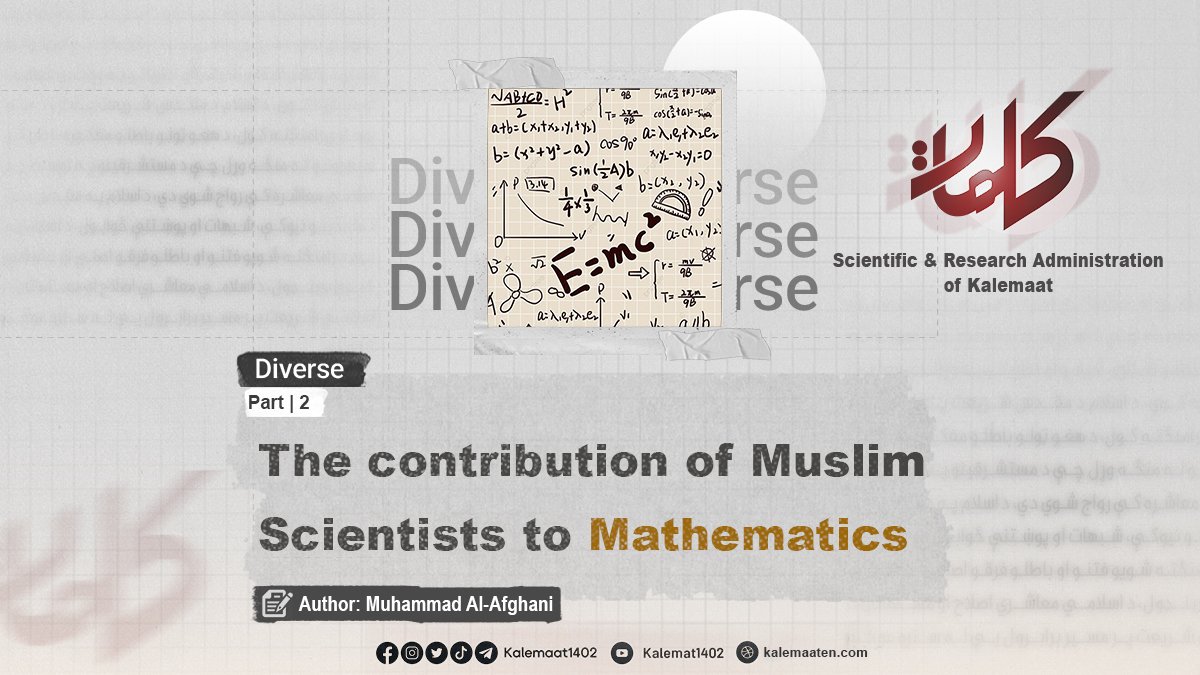
Author: Muhammad Al-Afghani
The Contribution of Muslim Scientists in Mathematics (Part Two)
Enduring Figures in Mathematics
Getting to know great mathematicians, being aware of their scientific works, and understanding their scientific lives is vital for contemporary mathematicians, students, and lovers of this field. Mathematics, as one of the most important indicators of modern civilization, overshadows other sciences and plays a fundamental role in their growth and development. This science, like other basic sciences, is growing and evolving, and many efforts are being made to advance contemporary mathematics and also to provide a platform for the growth of other sciences that depend on the principles of mathematics.
Therefore, access to comprehensive and valuable information in the field of mathematics is essential, and this is possible through knowing the great figures of this science. Studying their lives and works can arouse interest and motivation in us to acquire knowledge and the values inherited from them. In this section, we will examine some of the enduring figures in mathematics. There have been many famous figures in the field of mathematics, who have made significant contributions to the advancement of this science. Although it is not possible to review all of them in this short article, it is necessary to mention Muslim scientists who have made great efforts in this field and examine their lives in more detail. Of course, if the space is available, we will also discuss the biographies of scientists such as Pythagoras, Euclid, Archimedes, Eratosthenes, Diophantus and others.
Abu Bakr al-Karkhi
1. Introduction to the personality of Abu Bakr al-Karkhi:
Abu Bakr al-Karkhi, who was a contemporary of Abu Rayhan al-Biruni, Zakaria al-Razi and Abu Ali Sina Bukharai, died 32 years before al-Biruni. However, his fame is not as great as that of the three scientists mentioned. Al-Karkhi, whose exact year of birth is not known, was originally from Baghdad and is known as an outstanding mathematician, geologist and engineer. According to the great mathematicians of the world, Karkhi represents the theory of algebraic calculations among Muslims, which is considered to be after Al-Khwarizmi.
His works have had a great influence on mathematicians such as the Italian Leonardo Fibonacci and Levi Ben Gerson, and since the name of this scientist has been registered in the New York Encyclopedia of Science for two decades, it shows the world fame of this great man. However, today there is no precise information about his burial place. Karkhi had beautiful theories in the field of mathematics and made special services in this science that are recorded in the history of this science.
2. Karkhi’s functions
Karkhi’s mathematics and geometry, rather than being related to Greek proportions, are closely linked to Middle Eastern mathematics, which Al-Khwarizmi was also interested in. His work was not limited to second-degree algebraic equations but also included equations of higher degrees.
3- Karkhi’s works and compositions
Karkhi wrote many books that have achieved world fame. Below is a list of these books and their locations:
Al-Fakhri fi Sana’ al-Aljabr wa al-Muqabela – kept in Paris, Istanbul and Cairo.
Al-Kafi fi al-Hisab – kept in Istanbul and Germany.
Al-Badih fi al-Hisab.
Illal al-Hisab wa al-Muqabela, consisting of 5 chapters – kept in Ankara and Oxford.
Mukhtasar fi al-Hisab wa al-Masahah – kept in Alexandria, Egypt.
Al-Ajzar – kept in the Central Library of the University of Tehran.
Hisab Al-Hind.
Al-Masā’il wal-Jawabat fi al-Hisab – kept in Paris.
Al-Uqood wal-Abniyah.
Anbāt Miyah al-Khafiyah.
Karkhi is not only known as a scientist in the mathematical sciences and mechanics, but also a pioneer in the field of discovering underground waters and methods of extracting them. He had innovative theories, methods and inventions. Approximately 30% of the book “Anbāt Miyah al-Khafiyah” (No. 10) is dedicated to vector maps, and Karkhi was probably the first person to introduce vector maps of the earth.
There are many references about Karkhi’s writings and works in various sources that can be addressed in a more comprehensive study.
Continues…


